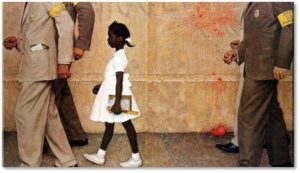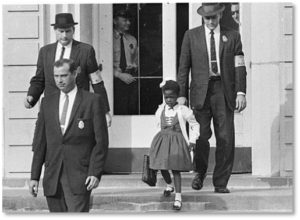This weekend we stayed with friends at their vacation house in the Berkshires. (That’s how Massachusetts residents refer to the Berkshire Mountains at the far western end of the state. We also go to “The Cape” [Cod] and “The Lake” [Winnipesaukee].)
One of the many wonderful things I did over the Labor Day weekend checked off an item that had been on my To Do List for a long time: visit the Norman Rockwell Museum in Stockbridge.
Illustration vs. Art
As I said in last year’s post about the New Britain Museum of American Art, illustration “fine art” critics and practitioners often disdain illustration. Mr. Rockwell himself declined to call himself an artist. We, the viewers, would likely disagree. Even the finest of painters, from Michelangelo to Renoir, got paid for their work and it often had a purpose beyond decoration. In Mr. Rockwell’s time, however, commercial art and fine art occupied separate niches that never intertwined.
Well, almost never. Consider Winslow Homer, who is considered one of America’s greatest painters, yet began his career as an illustrator for popular magazines like Harper’s Weekly. In my post about the Connecticut museum’s exhibit of illustration I explained why I find this genre so compelling.
Anyone who sneers at illustration for commercial hucksterism should check out the Norman Rockwell Museum’s excellent collection. You might just rethink your assumptions.
Sunday at the Rockwell Museum
Many vacationers headed to the museum to see an attraction that let them stay dry as Hurricane Harvey’s torrential rain poured down on the Berkshires. You still have to walk from the parking lot to the front door and back again, though, so I’m glad we brought our slickers.
The Rockwell Museum is comprised of three buildings set on a beautiful 36-acre site overlooking the Housatonic River Valley. (We saw a walking path to the river but declined to stroll that far in pouring rain.)
Architect Robert A.M. Stern designed the main gallery building as a white clapboard structure with a Greek Revival them that recalls old New England churches. This design suits the artist, the site, and the region perfectly. The main gallery building houses the world’s largest collection of Norman Rockwell art, including 998 original paintings and drawings.
Wait, it’s not art you say? Tell that to visitors who come in droves to connect with the paintings that reflected American life for decades. After I photographed my husband, the baseball fan, in front of Brooks Robinson, a couple asked me to take a picture of them with “The Marriage License” because the scene looked like the office where they had started their own marriage. Mr. Rockwell’s paintings, viewed by millions on the covers of magazines that arrived in the mailbox every week, connect with real people in a way that many “museum-quality” paintings do not.
Depicting Main Street America
After going through a few galleries, I thought that Mr.. Rockwell had presented a sanitized, white-washed, sentimental view of an America that existed more in our minds than reality. Think of Disneyland’s Main Street in contrast with a real Main Street.
But that was not his fault. As an independent artist, he had to follow the rules and guidelines of the publications that bought his work for cover art. Example: The Saturday Evening Post, for which he painted 323 covers, would not at first allow any of the figures to smoke at a time when smoking was common and accepted.
Amid the social turmoil of the sixties, Norman Rockwell produced powerful statements like “The Problem We All Live With,” which shows six-year-old Ruby Bridges being escorted to first grade by a quartet of U.S, Marshals. The museum also exhibits “Murder in Mississippi,” a sepia-toned work that shows us the 1964 murder of Michael Schwerner, James Chaney and Andrew Goodman. These powerful works make us think about who we are as a nation, what we believe in, and what we are willing to accept in our society.
Beyond the Collection
After absorbing the Rockwell Museum’s regular collection, we took in the exhibit: “Inventing America: Rockwell and Warhol.” I’m not a big fan of Andy Warhol’s art but the exhibit did include the science fiction cover art and illustrations done by his brother, James Warhola, which I loved.
Back out in the rain, we walked up the hill to visit Mr. Rockwell’s studio, which was moved to the museum grounds from its original location on Main Street om Stockbridge. There visitors can see his easel and glass palette, his collection of art books, supplies and props to get a good idea of how he worked every day.
When I checked the Norman Rockwell Museum off my To Do List, I have added it to my Life List of Art Museums. That makes three new additions so far this year. So much beautiful art, so little time.
Visiting the Norman Rockwell Museum
I urge you to check out the exhibits coming up on the museum’s calendar. The Berkshires are beautiful in the Fall and the Norman Rockwell Museum makes a great destination for a long weekend trip.
You will find all the information you need to plan your visit, including admission times and directions on this page. If you live in Massachusetts, check your local library to see if they have a pass that will score you a significant discount on the admission prices.





